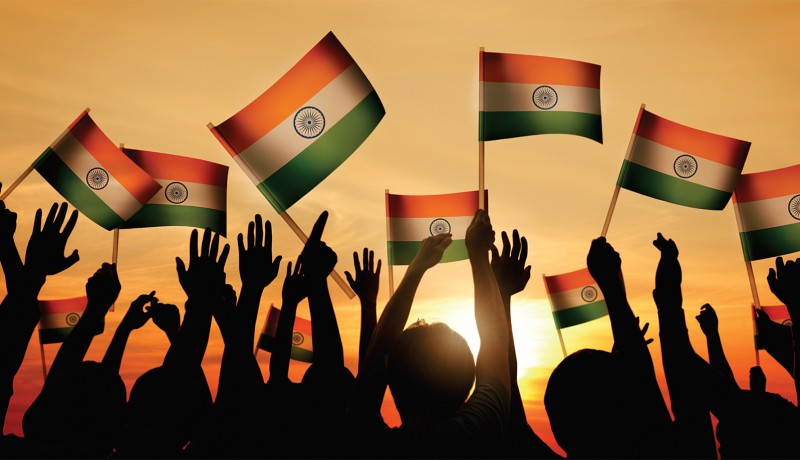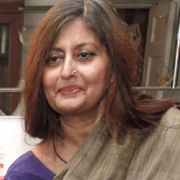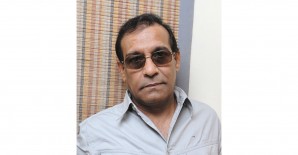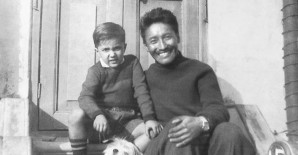
Columns

Humra Quraishi writes on how the definition of nationalism has changed over the decades since Independence
As I sit writing this piece, I must begin by stating that I haven’t ever felt so helpless and hopeless at the communally surcharged scenario engulfing this land. As a 61 year-old Indian Muslim, I have faced several turbulent phases but the situation hasn’t ever been as grim as it stands today. In this azaad nation I’m being made to feel I’m not azaad enough in terms of what I eat or wear, or where I can travel or reside! After all, goon brigades are lynching innocents out there in public; in trains, along highways, even on the roads of New Delhi!
So much seems changed over the years. This year I did not have the heart to ‘celebrate’ Eid-ul-Fitr because the political climate in the country is getting murkier by the day. The fabric lies ruptured. Yes, something or everything seems to be going haywire with the system, dragging along dismal ground realities. Where are leaders like Gandhi or Nehru who’d kept the nation and its people feeling safe and secure? After all, in a democracy it isn’t important whether the leader is from the minority or majority community. The only vital aspect is that he or she ought to be truly secular, and with that respected by all sections. Today, there is worry about our very existence, as democratic norms are fading into oblivion, as new definitions of nationalism are heaped on us by vested political interests, and the sane voice is throttled.
With gripping nostalgia, I reflect on those decades passed by. I come from an upper middle class family of erstwhile Avadh. Though my parents sent my sisters and I to a convent—Lucknow’s Loreto—they tried maintaining all those traditional aspects. I recall a maulvi sahib coming to our home to teach Urdu and help us read the Quran. Eid was celebrated with much enthusiasm. My father worked for the government and his transfers took us to different locales. Those seemed carefree, happy days. We, as Muslims, seemed to be living on a par in government colonies, interacting and intermingling with my father’s colleagues and their families. Nah, we were not made to feel like the ‘other’. There seemed no question of getting humiliated or attacked because we were Muslims. Though I must add here that news reports of communal rioting did trickle in, but it was understood that the culprits would be dealt with severely. In fact, I must mention that in my parents’ home, like in most Indian homes, dark realities were seldom discussed. Not openly. Definitely not in front of children! But realities can’t be brushed under dusty carpets and children do sense and grasp. In fact, as I’m keying this in, I can remember how some of those details came trickling in, right into my ears—it was one of those late evenings when my sisters and I were lying sprawled under mosquito nets on our beds and our maternal grandfather, probably certain we were asleep, sat discussing the horrific rioting ongoing in one of the locales of Uttar Pradesh. I was very young and the impact was difficult to cope with. To this day, those stories of police brutality on the hapless have stayed with me.
During my adult years, it got rather apparent that I belonged to a minority community that faced some very obvious communal biases at crucial levels. And the tragic aspect is that these realities have definitely worsened in recent years, getting compounded with the involvement of the political mafia.
I have seen and sensed many of these realities right here, in the capital city. Yes, in the supposed prime government locales of New Delhi. In fact, soon after the demolition of the Babri Masjid, it was traumatic to remove the nameplate from our government flat/apartment, which was situated on New Delhi’s Shahjahan Road, a high-security VVIP government colony. Why did we have to remove it? Because it carried a Muslim name! And there were more than rumours of communally charged right-wing mobs attacking Muslim homes. After all, during the anti-Sikh riots of 1984, the home of at least one senior Sikh bureaucrat was targeted in Lutyens’ Delhi. After the Babri Masjid demolition, I’d done an in-depth feature for the Illustrated Weekly of India on how Muslim children studying in the well-known public schools of the capital city had to hear snide comments not just from some of their classmates but from a few teachers.
In the past couple of years, I have attended public meetings held in New Delhi and other cities. Organised by well-respected activists of this country, the focus is on this grim reality—the growing despair among Muslims and their constant dread of being profiled as a terrorist, followed by denial of bail, torture, a biased investigation and trial, and extra-judicial killings. Not to overlook the daily dose of discriminations in education, employment, housing and public services…the list is long and ongoing.
What hurts and upsets is that even in this day and age, weird stereotypes prevail about the Muslims in India: they produce like rabbits, swallow meat at every single occasion, don’t shower, and are a terror-striking lot. So very often have I heard this half-query, half exclamation thrown at my face, “You really a Muslim? You don’t look like one!” What am I supposed to look like? Perhaps, doing farshi salaam or stuffing meatballs into my mouth, if not clutching at the arm of a bearded, achkan-clad man with a brood of squabbling children!
It seems that there is a deliberate attempt by vested political interests to put forth this image of the largest minority community of the country. Sadly, along expected lines, none of the Government Commissions or even that specially set up Ministry for Minority Affairs has done a thing to halt these mischievous, bogus and lop-sided notions in circulation. Why?
Let me say loud and clear that an average Indian Muslim’s living patterns aren’t different from that of his fellow Indians. There is no difference, except for a deep sense of hurt and insecurity. Yes, I sit worried for my country and for the very survival of the masses, for no country can progress if one quarter of its population sits bypassed, living in fear. This worry hasn’t sprung up overnight. In fact, it has taken off from the early 1990s and has been building up over these years. I have not just reported from riot-affected areas and conflict zones but have heard the most obnoxious communal comments. Perhaps I could cope because of the cushioning provided by friends like the late Khushwant Singh. Also, my two children Sarah and Mustafa were there for me. Now, they are married and ‘out of the nest’.
I don’t carry any hope from the political tactics of the day. But, yes, there’s much hope from fellow Indians who seem determined to fight the political rot. Today, hundreds and thousands of apolitical men and women of this country can see and sense the divisive communal politics at work. They realise the situation is alarming. And we, as a people, have to keep this country safe and secure for coming generations. The people-to-people connect has to be ongoing and we, as Indians, have got to be together, no matter which creed or community we come from. It brings to mind this verse from last Mughal emperor Bahadur Shah Zafar’s Ode to Hindustan:
Matchless is the soil of Hindustan
In it grow love, compassion and fidelity,
As sure as the sun rises from the East
So surges from this land sincerity.
This is the true seed of Hind and from its earth
These fruits have spread across the world, far and wide.
The writer is a Delhi-based author, columnist and senior journalist
Photo: 123RF.com Featured in Harmony — Celebrate Age Magazine August 2017
you may also like to read
-
Mental workout
Mukul Sharma tells you how to keep those grey cells ticking Everyone will ultimately lose his or her brain….
-
Helpline
Dr Harshbir Rana answers your queries on personal and social issues related to ageing, elder care and intergenerational relationships ….
-
Off the cuff
Raju Mukherji pays tribute to his first hero, Tenzing Norgay, an exemplary mountaineer Darjeeling, 1955. Dr ‘Pahari’ Guha Mazumdar….
-
Yoga RX
Shameem Akthar shows ways to control debilitating ankle pain through regular practice Ankle pain is so common and prevalent….








